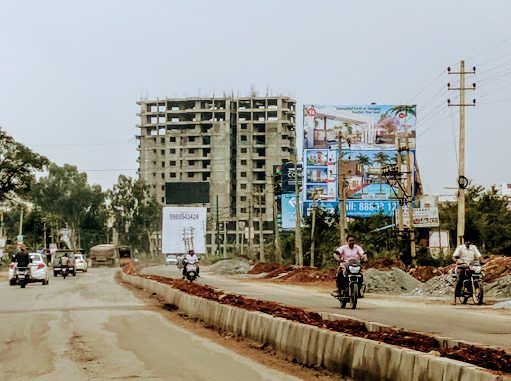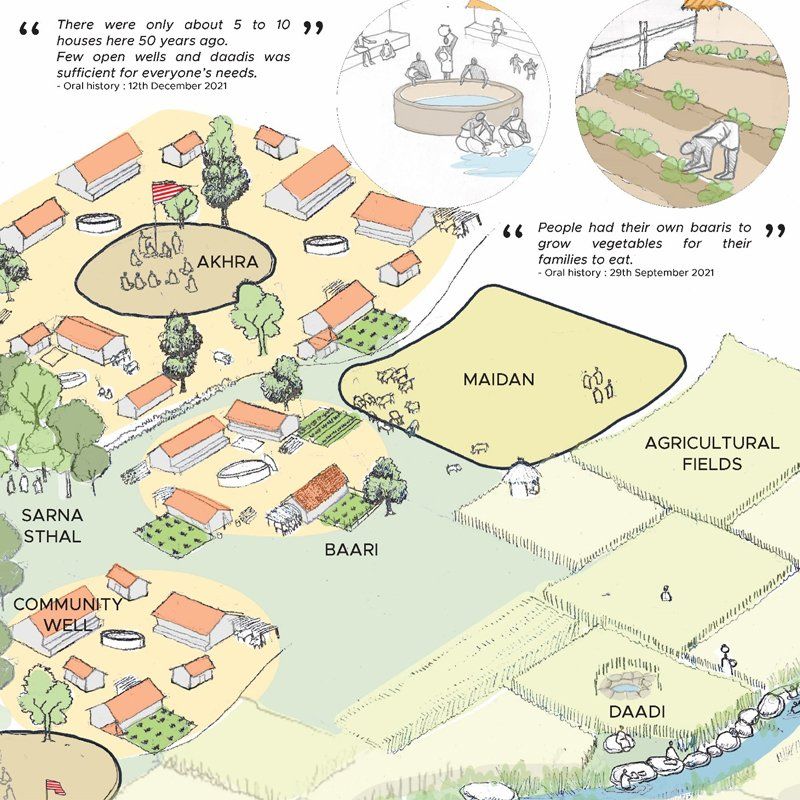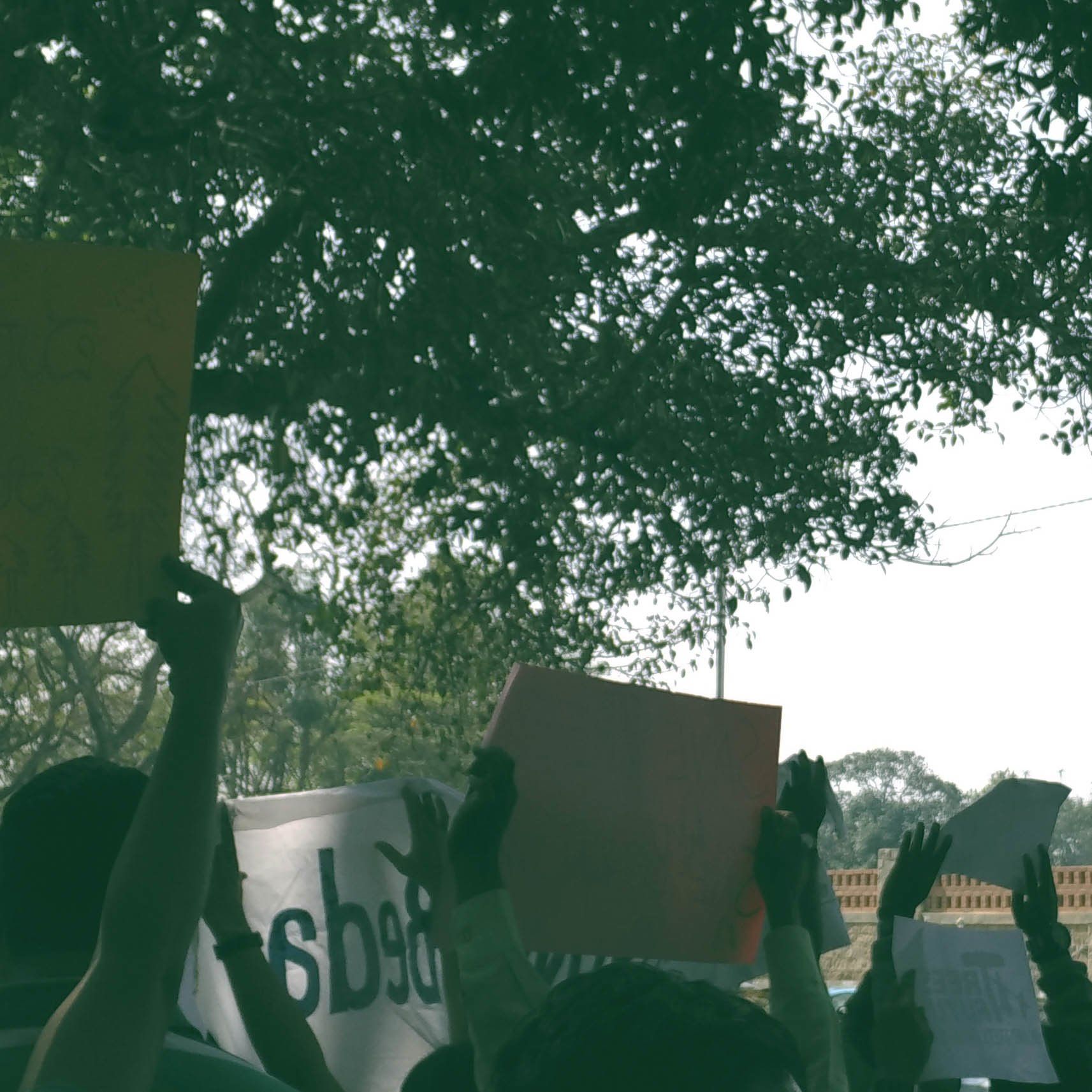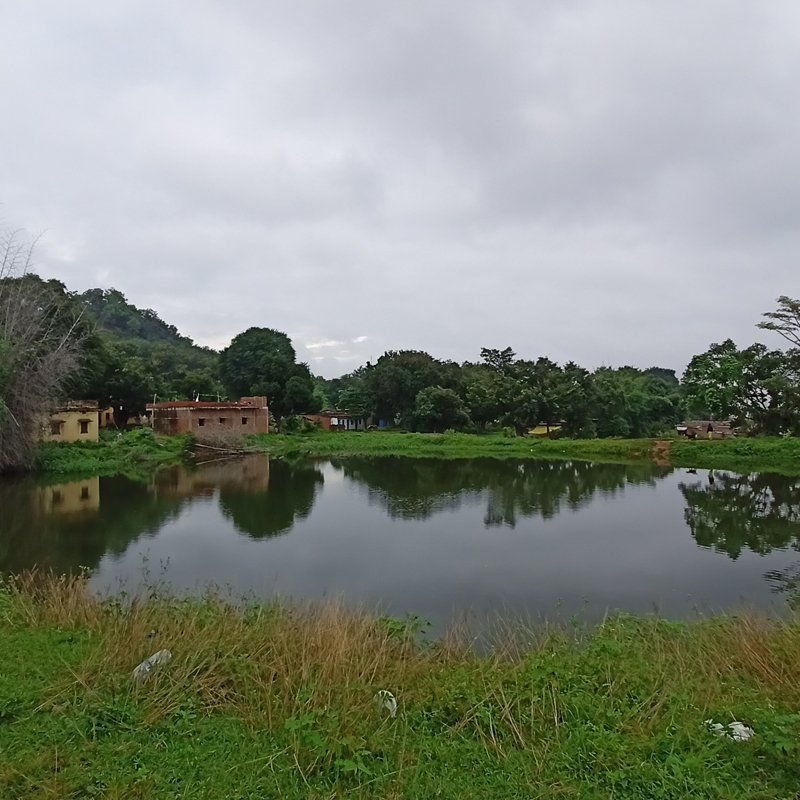Bengaluru’s real estate market up last year; but can apartment construction ban help the water situation?
Kedar Koushik, Citizen Matters • Jul 17, 2019
The spectre of water scarcity is haunting Bengaluru. And from a din of solutions to avert this man-made crisis, one suggestion has take the city over like a storm, and brought to the forefront a debate with myriad perspectives.

Recently, Deputy Chief Minister G Parameswara suggested banning apartment construction in Bengaluru for the next five years. His announcement invited strong objections from the real estate industry. Just a day after, the shares of Bengaluru-based real estate giants Shobha and Brigade plunged five percent.
However, Parameswara’s suggestion resonated with many citizens who have been facing the brunt of water shortage. Questions remain – at what pace is apartments coming up in the city currently, and would restricting new constructions improve the water situation?
Apartment sales and launches on the rise
Bengaluru’s real estate market is slowly picking up pace after the sudden policy changes (read demonetisation) that had affected industries. According to a report released this May by Liases Foras, a research and rating company, the city’s residential real estate sales had increased by 14 percent in FY 2018-19 compared to the previous year.
The number of new launches – that is, real estate that developers start marketing – has been increasing in Bengaluru as well. Across the eight tier-1 cities included in the Liases Foras report, the number of new launches had increased by 80 percent on average in 2018-19 compared to 2017-18. But in Bengaluru, new launches had increased by 96 percent. This rate of increase was second-highest in the country, after Pune.


In the top eight cities overall, during Q4 of 2018-19, the maximum number of sales were in Rs 25-50 lakh bracket. This segment accounted for more than one-third of the total units sold. But in Bengaluru, sales were highest in the Rs 50 lakh-1 crore bracket that quarter, indicating the city’s preference for higher-end properties, different from the national trend. Similar was the case with new launches too.
As the city’s real estate market is flourishing again, would a blanket ban on construction hamper this? How would it affect the thousands who work in this industry?
Farook Mahmood, Chairman and Managing Director of Silverline Realty, said a ban would shatter Bengaluru’s economy for the next five years. “Real estate is the second largest provider of jobs in the country. Since Bengaluru is one of the more vibrant markets, a ban would hamper its economic growth by denting not only the real estate market but also the ancillary industries connected to it. There are 45 different industries connected to real estate.”
However, urban and regional planner Dr Anjali Karol Mohan, who was involved with developing the city’s draft Revised Master Plan (RMP 2031), says this is not a black-and-white issue.
“Construction profits the few, but costs are borne by the larger city”
Anjali said that most new constructions are coming up in the periphery of the city since land prices are low there. She said, “Most of these apartments are being consumed for speculation. Construction is preceding development there, and many builders are extracting groundwater. If this is stopped, at least there would be some relief to the water table.”
Anjali said these houses are not being built for those who need it. “Some say that a construction ban would escalate the prices of the houses and they would become unaffordable. But unaffordable for whom? We are not really producing houses for the category that requires houses, or where the shortage is – that is, the affordable housing segment (below Rs 8-10 lakh).”
She said the fundamental question is, who should bear the cost of construction? “Is there an ecological, social and cultural cost to construction? Are the people who profit from these apartments and speculation bearing that cost? If yes, I think it is fair enough to go ahead with the construction. But that’s not the case – the costs are being borne by the larger city.”
Realty vs reality check
However, Mahmood said the government should find alternate methods to get water to the city rather than restrict construction. “We understand that the water levels are low, but alternative solutions like making rainwater harvesting mandatory for all buildings, plugging the loopholes in water distribution etc would help, instead of a blanket ban on construction,” he said.
But, with the threat of an acute water crisis looming, some Bengaluru residents welcome the government suggestion. Retired IAS officer V Balasubramanian said the suggested ban was a right step, but a bit too late. “There are already around 27,000 multi-storied buildings in Bengaluru and they are all dependent on underground and tanker water. Almost 60 percent of the total consumption of water in the city is from these sources. There are around four lakh bore wells in Bengaluru and most of them are going dry. There will be water rationing in the next five years,” he said.
Balasubramanian believes a ban would not be passed by the cabinet though. “Most ministers are themselves real estate giants and would be against the idea. Parameshwara must have floated this idea to make people feel the seriousness of the situation. Awareness has come into the public sphere and it is a good development.”
Balasubramanian said, if there was a ban on the construction of new apartments, there would be no buyers for upcoming buildings for a short period, the real estate market would go down, and the prices of existing buildings would go up; but not for long, as none of the new buildings would get water in the near future.
Anjali opines that eventually, a decision such as this should be based on a studied response. Currently there is no analysis on the housing requirement of the city. “We need to unpack what kind of houses are being produced, how many of these are really required, what the holding capacity of the city is in terms of water etc. If the minister said there would be a ban, I think it is a good option given how apartments are coming up now. If he said that certain kind of apartments would be banned and certain would not be, then it would be an informed decision,” she said.

By Networking Session by INDÈ at the Global Gobeshona Conference-2
•
01 Apr, 2022
Being a member of the Adaptation Research Alliance, ARA (a global, collaborative effort to increase investment and opportunities for action research to develop/inform effective adaptation solutions) and an ARA Micro grantee, Integrated Design (INDÈ) was invited to organise a networking session at the Global Gobeshona Conference-2 (conference theme: exploring locally led adaptation and resilience for COP27). The networking session was titled ‘Situating Urban (City) Resilience within the City-Region’ and was held on 1 April 2022.

By Dr. Anjali Karol Mohan
•
04 May, 2020
The online magazine SustainabilityNext carried an article by Benedict Paramanand titled “Has Fatigue Set into Civic Activism in Bengaluru?” The article caught my eye amidst the Covid 19 humdrum as I was looking for alternative news. I have been actively engaged in the debates around the (ill)growth and mis(management) of Bangalore for over two and half decades in my capacity as a professional planner straddling civic society, public policy circles and academia. The article revived in my mind some thoughts and suggestions that I articulate here. The attempt is not so much to answer the question, as it is to understand the shortcomings and limitations of civic activism in steering the complex politico-socio-economic and cultural layers that make up a vast conglomeration like Bengaluru. A disclaimer here merits mention. The premise that no individual stakeholder, public or private, has the knowledge and resources to tackle the wicked problems underpins successful governance arrangements. What this premise implies, by extension is that all stakeholders – public or private – have limitations. Civic Society (CS) is one amongst the numerous stakeholders that have a role – by no means a lesser one- to play. Yet, there are limitations to this role. While these limitations are embedded in the very nature of operation of the CS, there are conscious ways and means of overriding some limitations to move towards a larger impact. Bridging limitations is a critical need. Much of what I articulate while contextual to Bengaluru, perhaps holds true for civic activism across domains and geographies. To begin with, a critical question requiring reflection is the difference between civic activism and the much advocated (in (good) governance debates) Civic Society Organisation (CSO) engagement. These generally get clubbed in one category – while in theory and practice, that is not the case and therein lies the first limitation. Activism defined as direct vigorous action especially in support of or, in opposition to, one side of a controversial issue is willy-nilly an act of reaction. Reaction often leaves little space for taking distance and exploring the systemic cause of the challenge – the challenge itself sets the agenda. In contrast a proactive engagement of the civic society, through progressive partnerships while also triggered by a challenge is different in that the challenge is anticipated and therefore the agenda is set by civic society themselves. In Bengaluru, protests against the state-imposed flyover (# steelflyoverbeda ) and elevated corridors (# TenderRadduMadi ) is an example of the former. In contrast, the long-standing work on the ward committees which has seen some traction in the recent past – albeit slow and tardy – is an example of the latter. Having started as a proactive CSO engagement, the movement for neighbourhood planning and governance through ward committees (# NammaSamitiNamagaagi ) in the recent past has bordered on being reactionary, thereby hinging on activism. Although an ‘always proactive approach’ is not possible, given the capacity of our government to spring surprises, it is critical that the CS begins to move towards a proactive stance. There will always be a non-uniform interplay between being reactive and proactive. A second limitation, linked to the first, is the lack of capacity of the CS to act on relevant and practical evidence. This will require the CS to open their doors and develop progressive partnerships, including partnerships with policy makers, professionals (note that I do not use the word experts) and academia. An all-time reactionary mode of operation allows neither for collaborations nor evidence. Evidenced advocacy and conversations require domain knowledge (experienced domain knowledge is even better) which can facilitate knowledge production and mobilization. Activism hinges on passion (amongst other drivers) which is not the same as domain knowledge and knowledge mobilization. Both passion and domain knowledge have a role, yet the two can neither replace each other nor should be confused. Rather, passion that pivots on evidence and knowledge is a double-edged sword, one that has the capability to steer reactionary behavior to an informed proactive engagement. Such a move will serve to, over a period of time, course correct policies that are currently influenced by dominant political structures, electoral volatility and elite capture, as against being evidence based. A third limitation that needs consideration is the nature, purpose, goal and objective of the civic society coalition/group. Most often mobilisation is around a seemingly common purpose, goal and objective. For instance, groups that coalesced against large infrastructure projects as mentioned above or the demand for footpaths and public transit (# BusBhagyaBeku ) and sub-urban rail (# chukuBukuBeku ) are not homogeneous. It is often a mixed bag as against an imagined and perhaps desired integrated unit. Underpinning this pursuit of collective goals and objectives are individual desires, identities (which in themselves are multiple), beliefs, perspectives and previous experience, all of which are critical drivers, often leading to fragmented voices. This fragmentation notably, also derives from the inability to use evidence or domain knowledge. Elitist Activism Furthermore, activism in itself is and can be elitist. When linked to high levels of access it can be potentially hampered by what is referred to as ‘elite capture’. There are two types of activism: elite activism stemming from mobilization of charismatic individuals capable of getting their voice heard. Mass activism, in contrast, is where the general public, the haves and the have-nots, mobilize collectively. The two are not mutually exclusive, although both are critical. Barring a few occasions, Bengaluru’s activism has been elitist with a few voices that can access public policy corridors and therefore get heard. Consequently, consciously or unconsciously there is a leveraging of public policy for personal or limited gains (to a neighbourhood or a community). Activism is a luxury that not everyone can afford. Those who can afford it have a dual responsibility of using it to build bridges by roping in knowledge and experience on one hand and ensuring inclusion by creating spaces and opportunities for mass activism, on the other. The current modus operandi lacks on both counts. These shortcomings have led to what is being referred to as limited success, although limited from whose lens and success for whom is an additional enquiry, one that merits a separate post. What I do concur with is that at best the city has seen some cosmetic changes. Let me take the same two examples the article uses to demonstrate a going forward beyond cosmetic progress. First are the lakes in Bangalore that have seen a fair bit of activism. In many neighborhoods, thanks to the many charismatic residents, lakes have been claimed as better maintained natural resources. But for the initiatives of a few citizens, many lakes would have morphed into real estate projects. Yet, the same groups have done little to engage the larger neighborhoods to ensure that these natural resource ‘spaces’ become public ‘places’ for the neighborhood and the city. This would require a proactive engagement in identifying the larger neighborhood and the numerous linkages – backward and forward – that this neighborhood has had and can nurture with the lakes as public places. The second is the Tender Sure roads pioneered by Bengaluru. The implementation of Tender Sure roads is progressing incrementally moving from a pilot in the city core to radiating outwards in various directions. Putting aside the debates on the efficacy of the design as well as the appropriateness and relevance of the idea, the incremental implementation is marked by controversies on the criteria to shortlist roads such that both the visibility of and utility to the neighborhood and the city can be maximized. This too has not happened. Both these examples offer a critical insight: that the activism (and the few instances of engagement) has not translated into a thinking city. Changes are still hovering around the thinking individual. The transition to a thinking city is an emerging imperative, one that demands systemic change along various dimensions, some of which I have discussed above. To sum-up, sustained and big bang change as against cosmetic and incremental change is the need of the hour. It requires at the outset, one, more proactive engagement and less reactive activism; two, passion combined with experienced domain knowledge to trigger evidenced advocacy and change; and, three a less fragmented approach through creating meaningful spaces for mass activism along with the existing elite activism that the city has. While there may be numerous ways to act on these three, the Ward Committee space offer a ready platform for proactive action, evidence-based advocacy and wider participation. Arguably, this space is rife with political contestations and may seem a daunting challenge, yet, an engagement within this space is a surer foot forward. Clearly, there is a passion amongst Bangalore’s elite to be part of something bigger and this is a moment to be seized.
VISIT
3406/2 (784), 10th Main, 34A Cross, Jayanagar 4th Block, Bangalore 560011, Karnataka, India
CONTACT
+91 80 266 31398connect (at) integrateddesign (dot) orgwww.integrateddesign.org
©
Integrated Design
VISIT
3406/2 (784), 10th Main, 34A Cross, Jayanagar 4th Block, Bangalore 560011, Karnataka, India
CONTACT
+91 80 266 31398connect (at) integrateddesign (dot) orgwww.integrateddesign.org
©
Integrated Design
VISIT
3406/2 (784), 10th Main, 34A Cross, Jayanagar 4th Block, Bangalore 560011, Karnataka, India
CONTACT
+91 80 266 31398connect (at) integrateddesign (dot) orgwww.integrateddesign.org
©
Integrated Design


